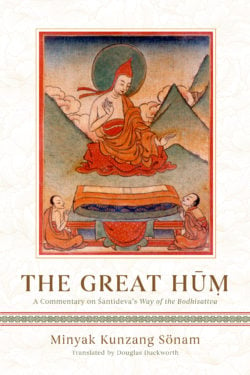Douglas Duckworth

Douglas Duckworth is a professor of religion at Temple University in Philadelphia. He received his PhD in religious studies (Indo-Tibetan Buddhism) from the University of Virginia in 2005, and he previously taught at Kathmandu University. He is the author of Mipam on Buddha-Nature: The Ground of the Nyingma Tradition (SUNY 2008), Jamgon Mipam: His Life and Teachings (Shambhala 2011), and Tibetan Buddhist Philosophy of Mind and Nature (Oxford 2019). He has translated Kunzang Sonam’s overview of the ninth chapter of Shantideva’s Way of the Bodhisattva, entitled The Profound Reality of Interdependence (Oxford 2019), and Botrul’s Distinguishing the Views and Philosophies: Illuminating Emptiness in a Twentieth-Century Tibetan Buddhist Classic (SUNY 2011). He is a coauthor of Dignaga’s Investigation of the Percept (Oxford 2016) and Knowing Illusion (2 vols., Oxford 2021). In addition to publishing numerous scholarly articles, Duckworth has coedited (with A. Velez and E. Harris) Buddhist Responses to Religious Diversity: Theravada and Tibetan Perspectives (Equinox 2020) and (with Jonathan Gold) Readings of Shantideva’s Guide to Bodhisattva Practice (Columbia 2019).
Books, Courses & Podcasts
The Great Hūṃ
Śāntideva’s Way of the Bodhisattva (Bodhicaryāvatāra) is without a doubt one of the greatest masterpieces of Indian Buddhism and the single most influential text on Mahāyāna ethical theory. Since it was composed in around the eighth century, it has continuously animated the living tradition, especially in Tibet but now in the West as well, as more translations have become available. Its poetic evocations of the spirit of awakening allow readers to enter the mind of the bodhisattva.
Its longest commentary in any language is the one translated here, by the nineteenth-century master Minyak Kunzang Sönam. It came to be known as the Great Hūṃ because it fills the entirety of the third or hūṃ volume of the author’s collected works. Citing hundreds of sūtras, he shows how Śāntideva’s verses are beautifully integrated within, and express, the Buddhist textual universe. In particular, he ties Śāntideva’s verses with the Anthology of Training, the thematic collection of scriptural citations also compiled by Śāntideva, creating a detailed tapestry of Mahāyāna thought and practice. This volume presents Kunzang Sönam’s commentary on the first eight chapters, detailing the generation of the spirit of awakening, the cultivation of positive qualities, and the practice of meditation. Embedded in the commentary is a fresh translation of Śāntideva’s verses, making this an unparalleled guide to appreciating their layers of meaning and applying them in one’s practice and life.
You can access the translation of Śāntideva’s verses here.
You can access the complete native outline (sa bcad) here.

